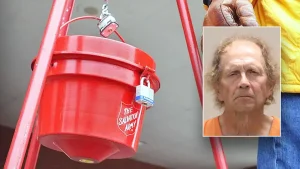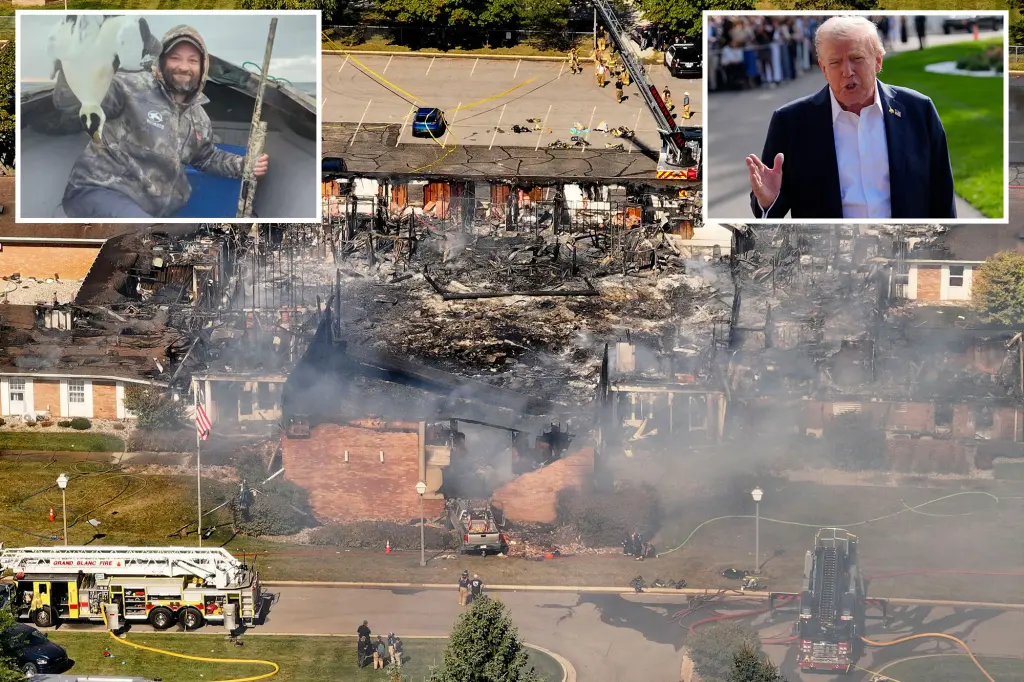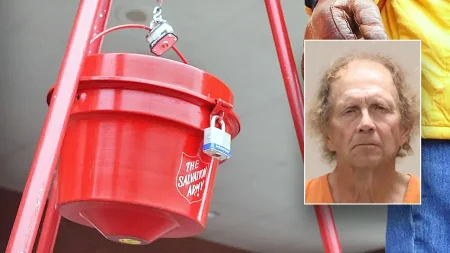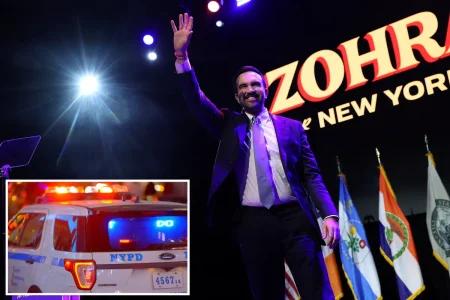Tragic Church Shooting in Michigan: A Community in Mourning
In a heartbreaking incident that has shaken the nation, a deadly attack unfolded at a Church of Jesus Christ of Latter-day Saints in Grand Blanc Township, Michigan on Sunday morning. The violence erupted just before 10:30 AM when 40-year-old Thomas Sanford, an Iraq War veteran, crashed his truck into the church building before opening fire with an assault rifle while services were underway. In the aftermath of this senseless violence, at least four people lost their lives and eight others, including children, suffered injuries. The tragedy deepened when Sanford set fire to the building while hundreds of worshippers remained inside, creating chaos and panic among those gathered for what should have been a peaceful Sunday service. This horrific event has once again thrust the issue of violence against religious communities into the national spotlight, leaving many to question how such brutality could unfold in a place dedicated to peace and worship.
The community’s sense of security was shattered as first responders rushed to the scene, where they encountered not only an active shooter but also a growing fire threatening those trapped inside. Two victims died from gunshot wounds, while two others were discovered deceased within the burned structure after firefighters extinguished the blaze. In a somber update that amplified the tragedy’s scope, Grand Blanc Township Police Chief William Renye warned that the death toll might rise, noting, “We do believe there were people up there that were near that fire, and they were unable to get out of the church. So we do believe that we will have additional victims once we’re able to search that.” This statement underscores the chaotic nature of the attack and the difficulties faced by worshippers attempting to escape both gunfire and flames. The gunman ultimately died in an exchange of gunfire with police officers who responded to the scene, bringing an end to his rampage but leaving a community devastated.
Former President Donald Trump quickly responded to the tragedy on his Truth Social platform, characterizing it as “yet another targeted attack on Christians in the United States of America.” His message reflected growing concerns about violence directed at religious gatherings and included a passionate plea: “THIS EPIDEMIC OF VIOLENCE IN OUR COUNTRY MUST END, IMMEDIATELY!” While investigations into the shooter’s motives continue, the incident has inevitably become part of ongoing national conversations about religious freedom, safety in places of worship, and gun violence in America. Houses of worship across denominations have increasingly implemented security measures in recent years, reflecting a sad reality that even sacred spaces are no longer immune from the threat of violence that has touched schools, shopping centers, and other public gathering places.
The human impact of this tragedy extends far beyond statistics. Families who sent their loved ones to church that morning now face the unimaginable pain of loss or the uncertainty of serious injuries. Children who should be experiencing their spiritual community as a place of safety and nurturing have instead witnessed trauma that may affect them for years to come. Church members who survived must now grapple with rebuilding not just their physical place of worship but also their sense of security within its walls. The broader Latter-day Saints community across the nation has rallied in support, offering prayers and assistance while processing their own feelings of vulnerability. First responders who rushed toward danger rather than away from it carry the weight of what they witnessed, from the confrontation with an armed assailant to the recovery efforts in a building damaged by both bullets and fire.
As investigators work to piece together the timeline of events and understand what might have motivated Sanford to target this particular congregation, the community begins the difficult process of healing. Support services have been mobilized for survivors and witnesses, with particular attention to the children who were present during the attack. Religious leaders from various faiths have condemned the violence and expressed solidarity with the affected congregation, demonstrating how such tragedies can both test and strengthen interfaith bonds. Questions about the gunman’s military service and mental health history have emerged, raising complex issues about veteran support systems and access to mental health resources. The incident has also reignited debates about access to firearms, particularly assault-style weapons like the one used in this attack, though such discussions often become polarized in America’s political landscape.
In the coming days and weeks, as the physical wounds of survivors begin to heal and memorial services honor those lost, the community faces the challenging task of moving forward while honoring what happened. Houses of worship have historically served as sanctuaries in the most literal sense—places of refuge and safety. When that sanctity is violated through violence, the ripple effects extend far beyond a single congregation or denomination. Yet throughout history, faith communities have demonstrated remarkable resilience in the face of persecution and tragedy. As this Michigan congregation navigates its grief and eventual rebuilding, they join a long tradition of people who have found ways to maintain their faith and communal bonds even after experiencing the darkest expressions of human violence. The challenge for the broader society remains addressing the underlying factors that contribute to such attacks, whether they involve mental health concerns, extremist ideologies, or easy access to deadly weapons—complex issues that resist simple solutions but demand thoughtful attention if we hope to prevent similar tragedies in the future.









